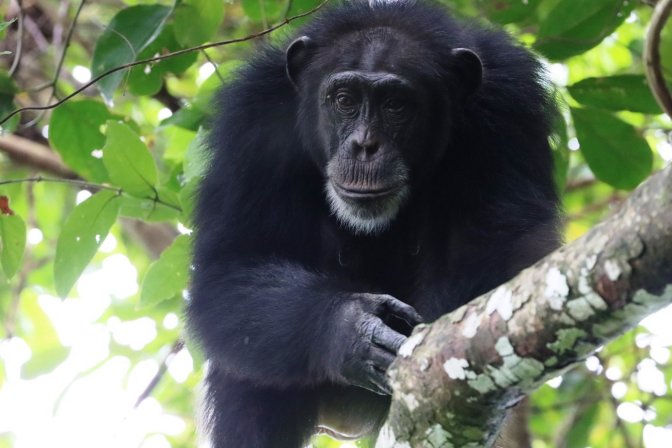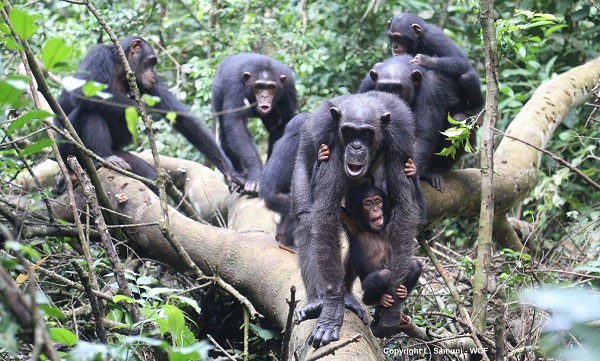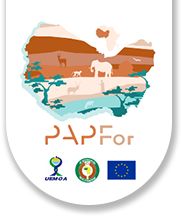Home / Guinean forests / Characteristics / The biodiversity / Species identity card / The chimpanzee
The chimpanzee
The chimpanzee (Pan troglodytes) belongs to the family of ‘great apes’ and is well known to the public because these species are very close to humans. It is therefore an emblematic species for conservation initiatives.
Of the four subspecies of chimpanzee in the world, one is endemic to the forests of Upper Guinea (Pan troglodytes verus) and another to the forests of Lower Guinea (Pan troglodytes ellioti).

Factsheet :
– Class: Mammal
– Order: Primates
– Family: Hominidae
– Genus : Pan
– Species : troglodytes
– Weight : between 30 and 40 kg for females and 40 to 60 kg for males
– Size: up to 1.7m standing
– Diet: omnivorous but mainly frugivorous; chimpanzees also eat leaves and bark, but also insects and small vertebrates, and very occasionally small monkeys
– Very social animal, forming groups of 15 to 100 individuals. Males are often aggressive towards other groups, and may kill other ‘outsiders’. Territories vary from 5 to 12 km2.
– Lifespan of about 20 years; in natural conditions, some chimpanzees can live up to 30-35 years.
– Reproduction: Chimpanzees reach puberty at around 7-8 years of age but females give birth to their first baby (rarely twins) usually at around 13-14 years of age, after a gestation period of 230 days.
The chimpanzee lives mainly in forests but also in savannahs. Unfortunately, these habitats are increasingly threatened by the expansion of agriculture, both village and industrial. Moreover, although protected, this species is hunted either for meat or for the trade in live individuals to sell as pets. There are thought to be only 200 000 to 300 000 chimpanzees left in the world, a figure that has been declining steadily for several decades, particularly in West Africa where deforestation is the highest on the African continent. The species is considered ‘endangered’ by the IUCN.

All the landscapes in the PAPFor programme are home to chimpanzees, so this programme is very important for the survival of the species. In each landscape, biomonitoring programmes follow the evolution of chimpanzee populations, either through counting (individuals and/or nests) or through camera traps. In addition, the chimpanzee is an important tourist attraction; PAPFor supports several eco-tourism initiatives as a means of reconciling conservation and riparian development through income generation for riparian communities.

